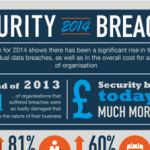Though the term “big data” is more popularly associated with business seeking analytical strategies for increased performance, big data is playing a huge role in re-imagining data security. Utilizing big data for security analytics can prove to be the next breakthrough solution for keeping information safe and mitigating risk where hands-on, real-time security professionals cannot handle the data. Here are some steps toward creating a viable big data security solution.
Collecting Internet Data
The first step for cybersecurity with big data is to collect as much data as possible. As data diversity is the key to understanding cyber attacks, data should be collected across different portals, traffic streams, geographic, and sectors on the internet. One can go the asymmetrical route and collect and analyze historical data, but there are also solutions that include real-time “stream processing” for instant detection. Such diverse data increases the ability to identify and disable attacks on the onset.
Impressive Infrastructure and Architecture
The ability to also store and process collected data and that from data streams in and out of networks is an important next step for cybersecurity. There must be a system built to secure data itself, while allowing analysts to access, compute, and visualize threats before they occur. This includes new visualization hardware, beyond analytical charts, graphics and Excel results. Visualization technology is on the rise, and will complement big data security analytics.
Algorithms for Automatic Detection
In order for big data to be a reliable obstacle against computer hackers, security developers and IT specialists need to develop a system that will detect and block these threats automatically. Analysts should work toward building strong big data security analytics algorithms that blend machine learning with behavior anomaly detection. The automated analytics done by the algorithm reduces manual work for analysts, which might prove to be too late to secure any type of threat. Creating self-learning, automatic, and active systems will involve a team of data specialists alongside IT experts on infrastructure, and data security professionals.
Determine Specifics
Big data can help solve specific attacks by collecting more information when the first breach is attempted. Currently, security settings are too simple and can cause false positives, in which alarms are set off by the time an illegal login is attempted more than a certain number of times. But big data can create security analytics that trigger warning signs beyond log-in attempts: it can help detect when someone is trying to breach a system outside a building or network, at an inappropriate time, and more. With these key detections in mind, security warnings can become more efficient, as well as respond more adeptly to changing contexts.
Overall, big data security analytics can make a big difference as a protective shield for all industries and companies. While there are some obstacles for certain groups—such as healthcare service providers and their sensitive confidentiality agreements—implementing big data security systems can create a formidable wall from cyber thieves, hackers, and malicious spyware.















